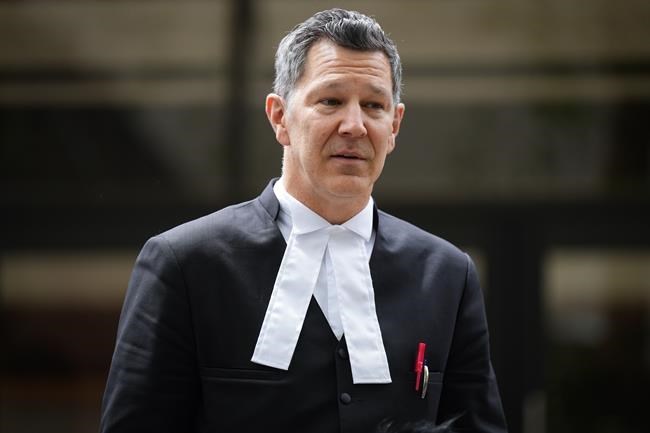NEW WESTMINSTER, B.C. — Sharing a link is "not child pornography," says a defence lawyer for a Dutch man accused of harassment and extortion of British Columbia teenager Amanda Todd.
Joseph Saulnier told the jury in Aydin Coban's B.C. Supreme Court trial Wednesday there was evidence that a video titled "AmandaTodd.wmv" was played on a device seized from his client's home, but it was not stored as a data file.
Coban has pleaded not guilty to extortion, harassment, communication with a young person to commit a sexual offence and possessing child pornography in relation to the Port Coquitlam, B.C., teen.
Earlier in the trial, Crown attorney Marcel Daigle cited testimony from a Dutch officer who said a deleted video file called "AmandaTodd.wmv'' had been played on one of the devices in December 2010, corresponding with a time when Todd was being actively harassed.
But Saulnier said the evidence "does not support the existence of a data file of child pornography on Amanda Todd."The jury should acquit his client on the charge of possessing child pornography, he added.
The video was sent out as a link but there was nothing to show it was stored as data on the seized devices, Saulnier told the jury on the second day of his closing argument.
"Can you look at this and be satisfied beyond a reasonable doubt of the possession of a data file of child pornography?” he said. “No.”
Crown attorney Louise Kenworthy wrapped up her closing arguments Tuesday saying there was a "treasure trove of information" linking Coban to the harassment and extortion of Todd.
When the trial began almost two months ago, the Crown told the jury Todd had been the victim of a persistent campaign of online "sextortion'' before her death at age 15 in October 2012.
Saulnier focused on the Crown's claim that it was the same person, Coban, who operated various accounts involved in Todd's harassment.
“I say Crown established there are connections between these accounts. It's not a coincidence. I agree it’s not a coincidence," he said. "Doesn’t mean it’s the same person.”
He pointed to differences in the way capital letters, grammar, apostrophes and abbreviations were used by the various accounts, then drew a contrast with the way Todd wrote throughout the exchanges.
"So, Amanda Todd again, she's writing in all lowercase, not using capitals, that's consistent,” he said. “She writes the same way."
The defence lawyer also told the jury that various Facebook accounts that targeted Todd had operated on internet browsers that were not found on the seized devices.
“This is a significant hole in Crown’s theory,” he said.
“This is actually evidence of people accessing these Facebook accounts from other devices, from other computers, evidence of other people using these Facebook accounts.”
There were no cookies from Facebook found on the seized devices, Saulnier said Wednesday, referring to pieces of data that websites use to track users and their preferences.
"Even if you manually or automatically delete your cookies … for privacy — that (deleted) cookie — it goes to deleted space," he said.
"Finding a fragment doesn't mean that whoever had that device is the author of the message."
Saulnier had said Tuesday that what he called fragments of computer data cited by the Crown could not link Coban to the extortion and harassment of Todd.
He argued in his closing argument that the devices found in Coban's house don't necessarily belong to him.
"My submission in the evidence was that he repaired computers. He was a computer guy," he told the jury. “It does make sense that Mr. Coban, if he’s looking at someone else’s device, he’s going to connect it to something."
All this evidence points to someone else and not Coban who was involved in the harassment and extortion of the teen, he said.
"For all of the counts, the Crown has not proven beyond a reasonable doubt Mr. Coban is the author of these messages. They have not proven beyond a reasonable doubt Mr. Coban committed these offences. I asked you to acquit Mr. Coban."
Justice Martha Devlin is scheduled to give her final instructions to jury members on Friday before they begin deliberations.
This report by The Canadian Press was first published Aug. 3, 2022.
The Canadian Press




